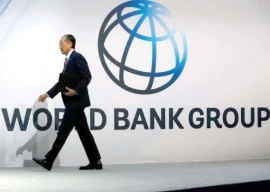
What is quite puzzling is that the consumers, who actually pay the prices on which the inflation statistics are based, do not agree with such estimates.
Consumers are of the opinion that inflation numbers are underestimated in Pakistan. Notable economists also share this opinion. In particular, the methodology adopted by the PBS has come under criticism from the economists.
July FY18: Inflation falls to lowest level in 20 months
The purpose of this article is not to highlight the methodological pitfalls, but to question if the slow increase in the general price level, as reported by the PBS, is in line with the macroeconomic fundamentals.
Policy-makers would have us believe that they are. We are told that improvement in production, low global oil prices and a stable rupee exchange rate are the main reasons behind the reduction in inflation rate. This reasoning holds true only if viewed in isolation from the dynamics of Pakistan’s economy.
Once these dynamics are incorporated, the official inflation numbers become misleading keeping in view the actual price level encountered by Pakistani purchasers.
Improvement in production
It is true that in recent years production has increased in Pakistan’s economy. Technically, it makes sense that the increase in production can reduce inflationary pressure on the economy. But a swift increase in the printing of notes can more than overcome the negative impact that any increase in production may have on the general price level.
Some commentators are of the view that the relationship between note printing and inflation has eased. This argument can only make sense if the currency printed does not become part of the economy.
In case of Pakistan, most of the rupees issued do enter the economy. From 2013 to 2016, 94% of the rupees issued became part of the currency in circulation.
The currency in circulation has grown at an annual rate of 19%, which far outstrips the annual economic growth of 4.1% from 2013 to 2016. Pakistan has become like an economy, which is producing too few cherries but too many coins for pay for them. Naturally, the price of cherries is bound to go up at a higher rate.
Stable rupee
A stable rupee can save us from the dangers of imported inflation only if most of the goods that an average Pakistani household consumes on a daily basis are imported.
Despite the popular belief among many Pakistanis, most of the goods that are part of our general consumption pattern are not imported.
Food products on which an average Pakistani household spends 35% of its monthly expenditure account for only 6-10% of our imports. Almost two-thirds of the products that we import are not part of our consumption directly.
How can we expect that a stable rupee can have such a gigantic impact on Pakistan’s inflation rate? The argument runs counter to the ground realities of Pakistan’s economy.
Slowdown in global oil price
Pakistan’s economy is quite dependent on the import of oil, especially, since one-third of the electricity produced in the country is based on oil, which is the largest chunk in the pie.
A reduction in the price of oil can have a serious negative impact on the inflation rate and hence improve consumer welfare through reduction in the electricity bills in particular.
The federal government has denied consumers any advantage of reduction in the global oil price. The Ministry of Water and Power admitted before the Public Accounts Committee (PAC) in July 2017 that despite tariff reduction in the power sector due to falling global petroleum prices, the consumers did not get any benefit.
Instead, the federal government imposed two additional surcharges to cover payment of commercial loans and its interest, line losses, tariff rationalisation and other taxes.
As per details provided by the ministry, the price of electricity includes 43 paisa per unit of debt servicing surcharge and Rs1.23 per unit of tariff rationalisation surcharge to return Rs371 billion of commercial loans and their interest.
CPI inflation stands below target at 4.16%
The case of electricity price is even more peculiar than that. In the calculation of inflation rate, the PBS takes the electricity price as Rs2 per unit, which is consistent with 50 units of electricity consumption. Average usage of electricity units by Pakistani households is far more than that. This price of electricity has remained constant at Rs2 per unit since June 2012. This means that electricity price has not increased at all since June 2012, which is against the real picture faced by the consumers.
The arguments presented here point towards the fact that there is something not right with inflation rate as reported by the PBS. So is it a faulty methodology or has the inflation rate become hostage to political consideration?
Whatever may be the answer, misleading signals by the government distort the functioning of market economy.
The writer is a researcher and works in the development sector of Gilgit
Published in The Express Tribune, August 7th, 2017.
Like Business on Facebook, follow @TribuneBiz on Twitter to stay informed and join in the conversation.









1730379446-0/WhatsApp-Image-2024-10-31-at-17-56-13-(1)1730379446-0-270x192.webp)







COMMENTS (1)
Comments are moderated and generally will be posted if they are on-topic and not abusive.
For more information, please see our Comments FAQ